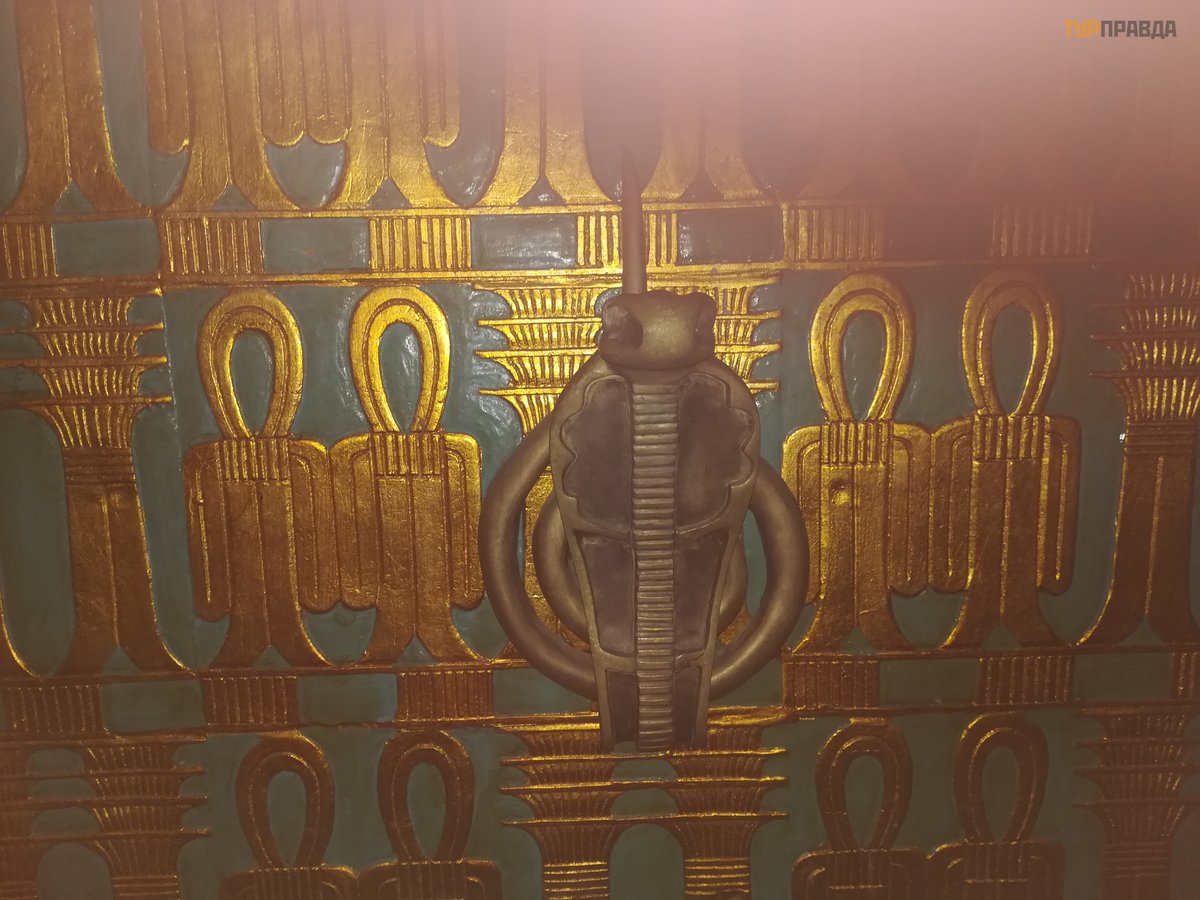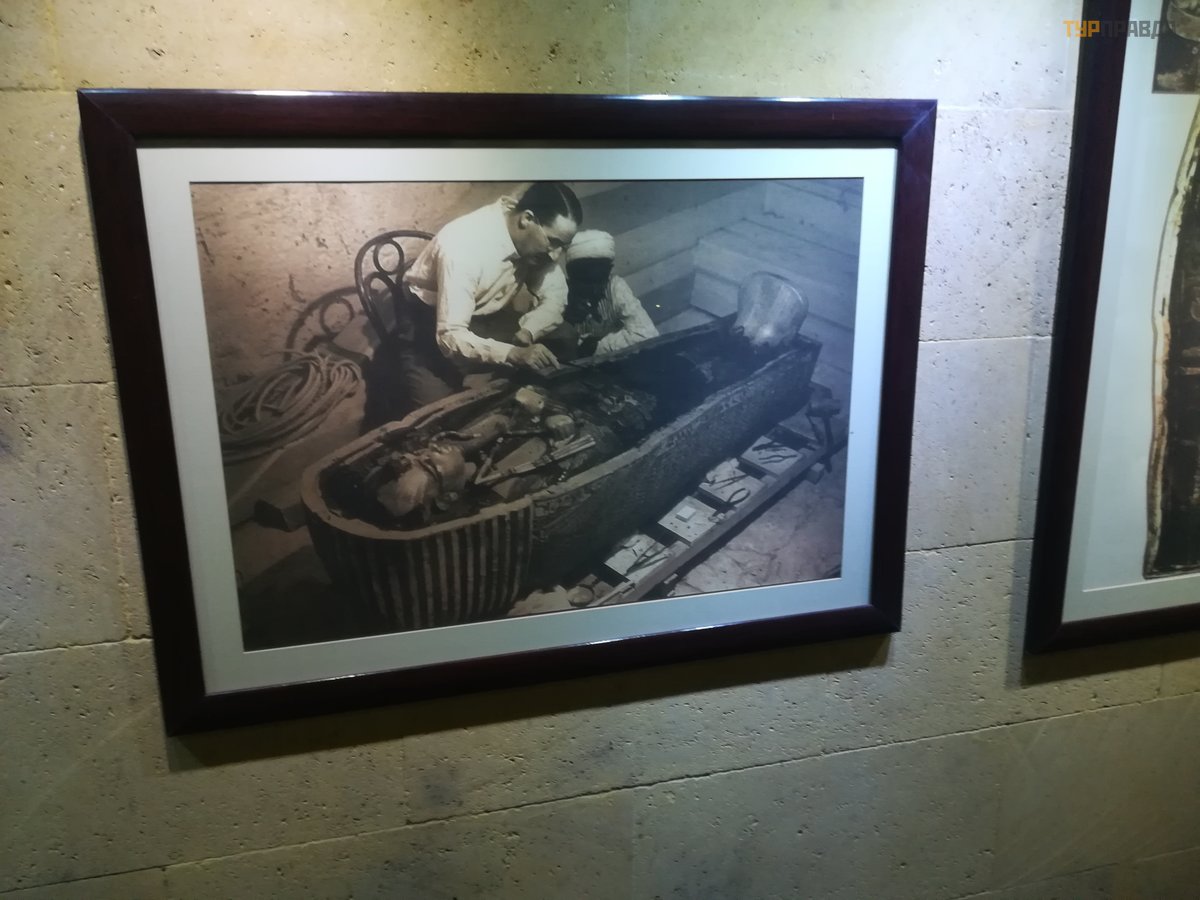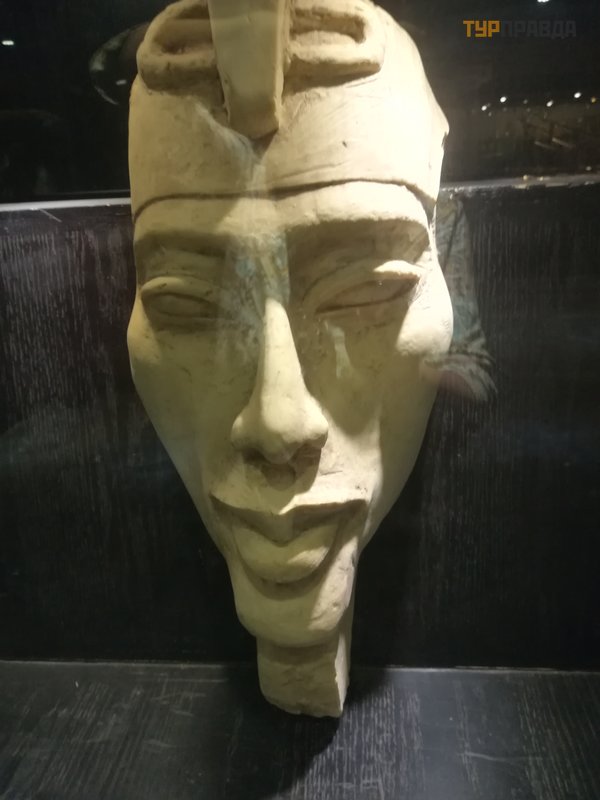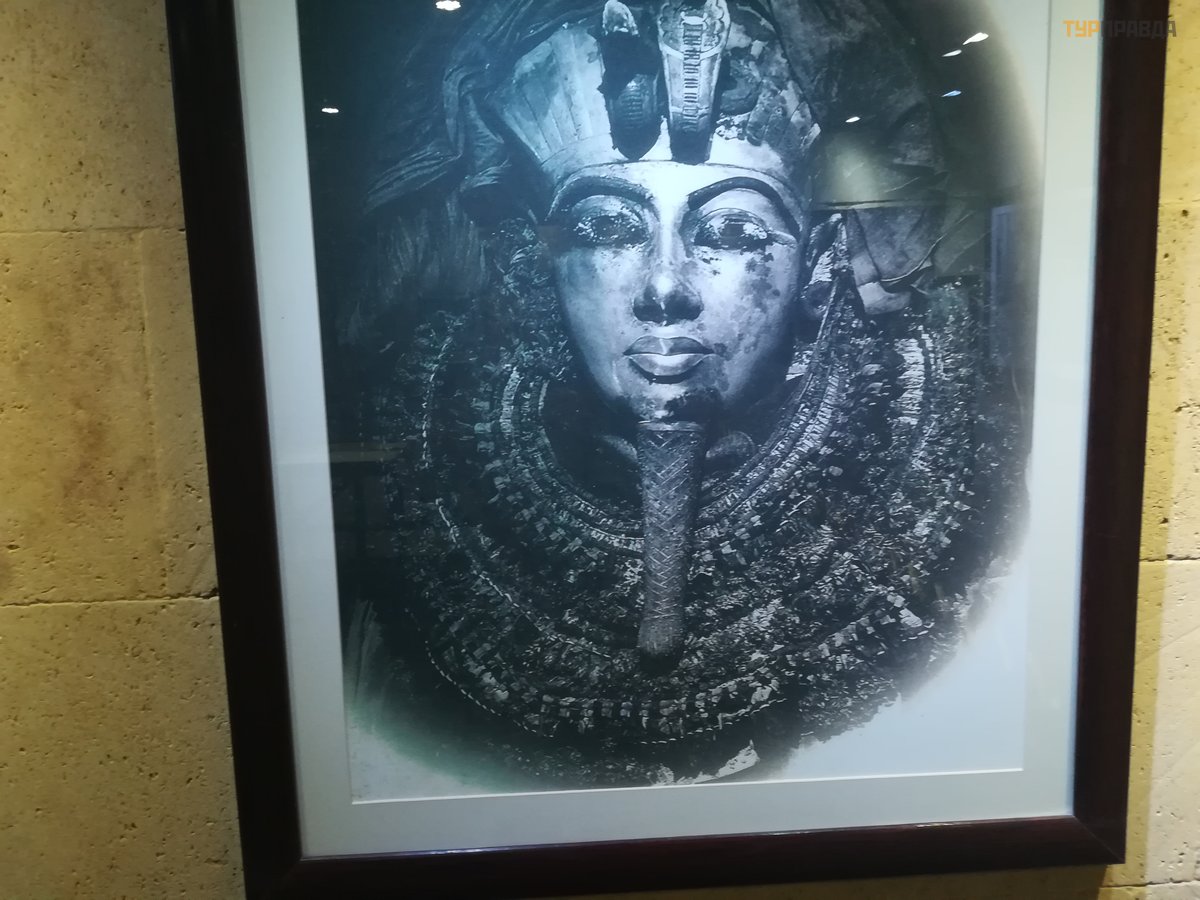In the footsteps of the great explorers of the tombs
In November next 2022, the centenary of one of the most significant discoveries in the history of ancient Egypt and all mankind is coming - the discovery of the tomb of Pharaoh Tutankhamun in the Valley of the Kings. The significance of this event cannot be overestimated: it simply shocked the entire archaeological world, lifted the veil over many historical secrets, gave new ideas about the life of the Egyptian pharaohs, and revealed masterpieces of fine arts, jewelry, weapons and other arts.
In March 2021, we visited Egypt for the 27th time, by which time we had seen almost all the “iconic” sights of this beautiful country. In Cairo were 2 times and 1 time in Luxor. The famous Cairo Museum, and especially Tutankhamen's Hall, became a favorite place in Egypt. These excursions are very exciting, but long and exhausting.
In 2014, Tutankhamun Museum was opened in the resort town of Sharm El Sheikh. It is located in Naama Bay on the "zero" floor of the Genena City Mall, entrance $ 15 per person. We decided that we should visit it at least once. We took a minibus to Naam.
The shopping center is clearly visible from the road. The museum itself was barely found. The hall in front of the museum is decorated in "Pharaonic" blue and gold colors, the architecture resembles the Temple of Karnak, there is a large copy of the Abu Simbel complex.
An employee of the museum came out to meet him for a refund. The handle of the museum door is made in the shape of a king cobra, as if warning about possible dangers.
The process of the tour itself is an independent study of the exhibits. The worker turned on the soundtrack in Russian, which briefly told about each exhibit. The sound quality is poor, but each artifact comes with a label with a brief description.
The museum presents about a hundred copies of real artifacts found in the tomb of Tutankhamen. The originals are kept in the Cairo Museum. We have already seen the originals, they left an indelible impression. In order to make the most of your time at the Tutankhamun Museum, you just need to know the history of the excavation of Tutankhamun's tomb, at least briefly. Now, thanks to the Internet, this is not a problem; you can find many articles and documentaries about almost any significant historical place or event. Please take my advice and go to the museum at least a little prepared. In addition, the study of the history of Ancient Egypt is an exciting activity, the more you study it, the more secrets you find. If you visit the museum completely unprepared, you will not understand either where you are or why you are here. With your permission, I will conduct a brief digression, compiled from my modest knowledge.
By the beginning of the 20th century, almost the entire Valley of the Kings (the burial place of the royal people of Ancient Egypt, located near the ancient capital of Thebes (the modern city of Luxor)) was already well studied by archaeologists. Unfortunately, almost all the tombs were looted. However, in the Karnak Temple, references were found to one royal name of the pharaoh-boy Tutankhamun, whose tomb was not discovered. The search for this tomb became a challenge for the most ambitious archaeologists of that time. Years passed, the search was not successful, many gave up. But the young Englishman Howard Carter did not want to add to the lists of the desperate. With the financial support of the patron and enthusiast Lord Carnarvon in 1907, he decided to try his luck in search of the tomb of Tutankhamun.
Years passed, and success eluded the researchers, the money allocated for excavations ran out. By the fall of 1922, Carnarvon warned Carter that this was the last season. Carter persuaded him to give him at least a couple more months.
By the beginning of the 1922-1923 season. a small piece of land remained uncleared, on which there were several huts of ancient builders %81%D1%82%D0%B8%D1%8F" target="_blank">XX dynasty, which indirectly indicated a possible burial. On the evening of November 2.1922, Carter ordered the workers to begin demolishing the cabins. When the next day, on the morning of November 3, he arrived at the place to check on the state of affairs, he noticed a strange silence. They waited for him and did not dare to continue. Workers found a stone step under one of the shacks. By the evening of November 5, it became clear that this was the entrance to an unknown tomb.
I will not describe the entire long-term process of the excavation of the tomb itself, associated with politics and bureaucratic obstacles. Let me just say briefly: for the first time, all the riches and splendor of the royal tomb, practically untouched by robbers, were revealed to mankind. People were able to learn about the life and death of the boy pharaoh, about the beliefs of the ancient Egyptians, about their way of life, about the cult of the afterlife, about the traditions of burial and mummification.
It is impossible not to mention the high artistic value of the artifacts. The magnificent wall painting tells about the life and death of the young pharaoh.
The gilded, painted thrones speak of his exploits and greatness, the footstep in front of the throne depicts defeated enemies.
Boats and chariots richly decorated with gold and carvings are designed to move the pharaoh in the afterlife.
Beds and chests are designed for the luxury and comfortable eternal life of Tutankhamen.
Ivory bone vessels are an amazing example of ancient painting.
You can't ignore the gunsmiths, whose talent is visible to the naked eye.
The full-length statues of the guards of the tomb are made with extraordinary realism, they reliably guard the peace of the young king.
Jewellery is created in a unique ancient Egyptian style, their beauty and luxury will envy even a modern fashionista.
The body of the young king rested in the last of four sarcophagi placed one inside the other. The painting of the sarcophagi also deserves special attention.
After opening the sarcophagi, archaeologists saw the embalmed mummy of the pharaoh in a golden funeral mask. The mask has become famous all over the world and is firmly associated with the image of Tutankhamun. The mask is one of the most famous works of art in the world, as well as one of the signature symbols of Ancient Egypt. The mask has the appearance of Osiris, the Egyptian god of the afterlife, is 54 centimeters (1.8 feet) high, weighs over 10 kilograms (22 pounds) or 321.5 troy ounces, and is adorned with semi-precious stones. An ancient spell from the Book of the Dead is inscribed in hieroglyphs on the shoulders of the mask. The mask had to be restored in 2015 after its 2.5 kilograms (5.5 lb) braided beard fell off and was hastily glued on by museum workers.
And the most terrible exhibit of the museum is an exact copy of the mummy of the young pharaoh.
What is Pharaoh Tutankhamun famous for? The son of the famous reformer pharaoh Akhenaten and an unknown princess at birth received the name TutankhAten (the living incarnation of the Aton). Akhenaten for the first time on earth introduced monotheism (monotheism), proclaiming the cult of the single god Aten as opposed to polytheism (the cult of several gods). The capital of Egypt was moved from Thebes to El Amarna.
The architects of that time gave humanity "Amarna art", a distinctive feature of which is realism and secularism. Monotheism also made its contribution to the visual arts; artifacts of that time often use the image of a solar disk with palms (the god Aten).
One of Akhenaten's wives was Queen Nefertiti, famous for her beauty and intelligence.
After Akhenaten's death, one of his daughters supposedly ruled Egypt for several years. At about the age of eight, the throne was taken by the young boy Tutankhamen (he returned polytheism, the cult of Amun and changed his name). Estimated time of reign 1332-1323. BC. The young king died suddenly at the age of 18, probably from blood poisoning caused by a leg injury while hunting. There are several versions about the murder. In addition, the pharaoh was quite sickly and had genetic diseases. This is the result of the cult of incestuous marriages, which was widespread in ancient Egypt among the royal families. So, Tutankhamen himself was married to his sister %D0%BD%D0%B0%D0%BC%D0%BE%D0%BD" target="_blank">Ankhesenamun, daughter of Akhenaten and Nifertiti. In this union there were two stillborn daughters found in the tomb of Tutankhamun.
Could the young king during his ten-year reign, most of which ended up in adolescence, and even under the regents, did something grandiose for the history of Ancient Egypt? There is practically no historical evidence of this.
Howard Carter was of the following opinion on this matter: "In the present state of our knowledge, we can say only one thing with certainty: the only remarkable event in his life was that he died and was buried. "
With the burial of the pharaoh, not everything is clear. Some details still raise many questions and disputes in scientific circles. The mummy was obviously hastily embalmed, despite the fact that in ancient Egypt embalming technologies were perfected. It can be seen that the successors of the pharaoh were in a great hurry to be the first to take the vacant throne. It is a paradox, however, in the most famous tomb, the most famous pharaoh practically owns nothing. Even the tomb itself does not correspond to the status of the King of Egypt. On the walls you can clearly see the imposition of the name of Tutankhamen on someone else. Sarcophagi, gold jewelry and even the world-famous golden mask also keep the remains of someone else's name. The young king died suddenly, not having time to prepare a proper tomb for himself. According to one version, his successor Eya buried him in his own tomb, hastily embalming the body, until another contender for the throne returned from the campaign. The death of Tutankhamen, who left no heir, led to palace wars and intrigues. If the hastily altered tomb is so magnificent, then what did the tombs of the pharaohs look like, who ruled for a long time and prepared all their lives for a worthy transition to the Kingdom of the Dead, for example, Ramses II or Cheops?
The discovery of Tutankhamun's tomb gave humanity not only priceless art objects, but also many legends. One of the most mystical is the legend of the curse of the royal tomb for those who disturb the eternal sleep of the young pharaoh. True or not, Egyptologists argue to this day. These legends have inspired many directors and screenwriters to create cinematic masterpieces.
The museum, although it consists of copies of famous artifacts, however, gives you the opportunity to imagine yourself in the place of the discoverers of the tomb, look through their eyes and feel their emotions at the moment of making one of the most significant archaeological discoveries. History should not only be taught, read, listened to, but also seen with one's own eyes and felt, especially if there is such a unique opportunity. This tomb was opened to mankind almost a hundred years ago, discover a piece of ancient history for yourself. I think that in the future the young pharaoh Tutankhamen may still bring us many surprises.

















































